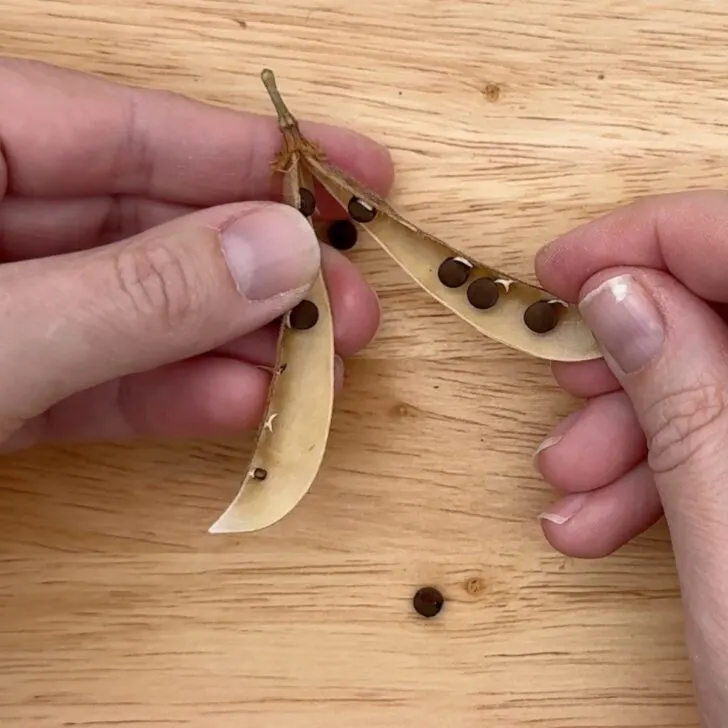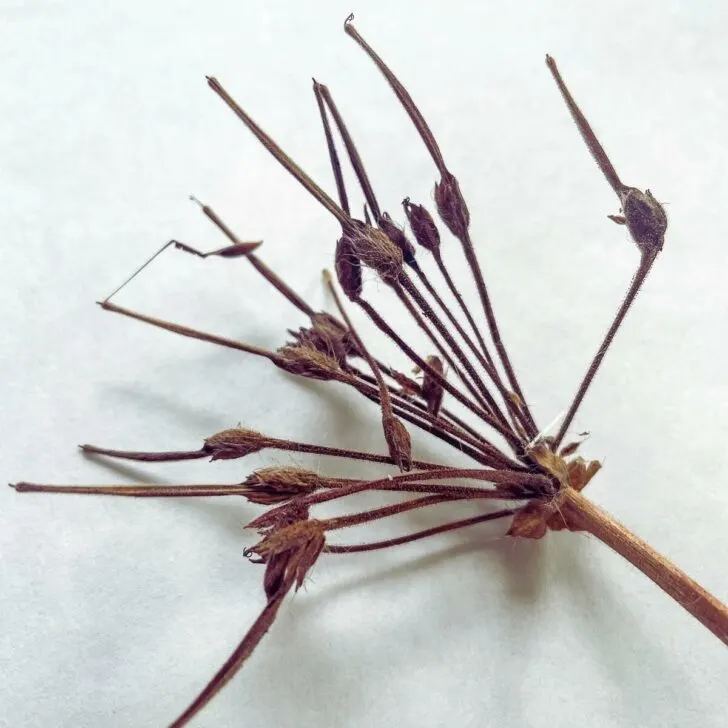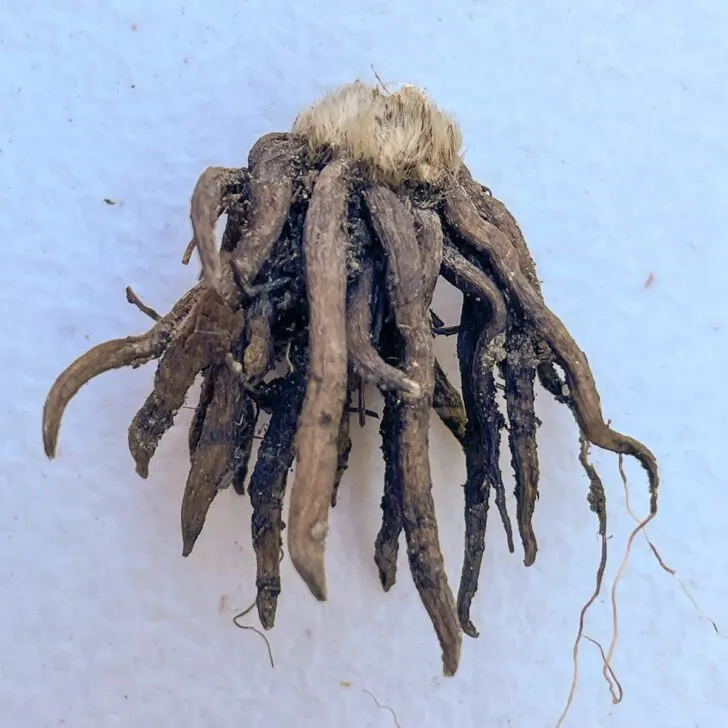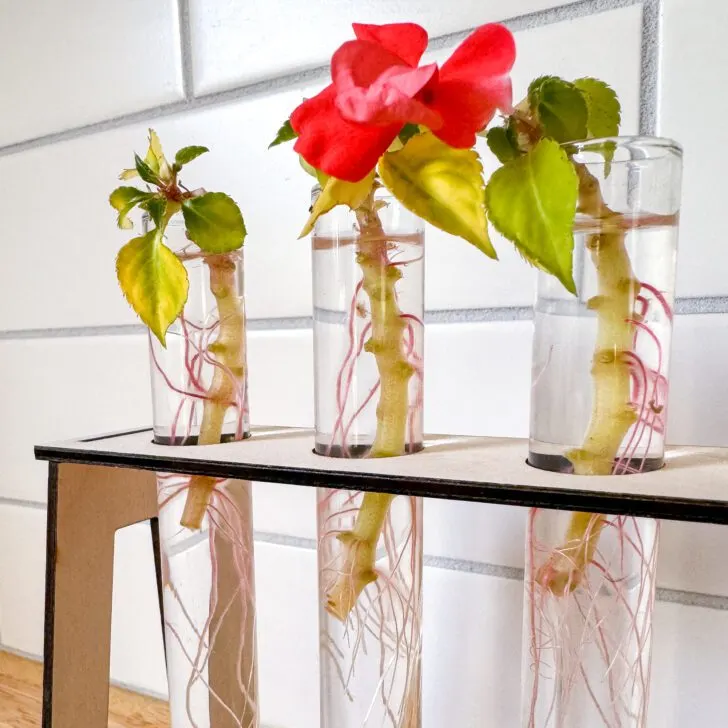Want to grow the same amazing basil year after year? Here's how to collect basil seeds and save them for next season!
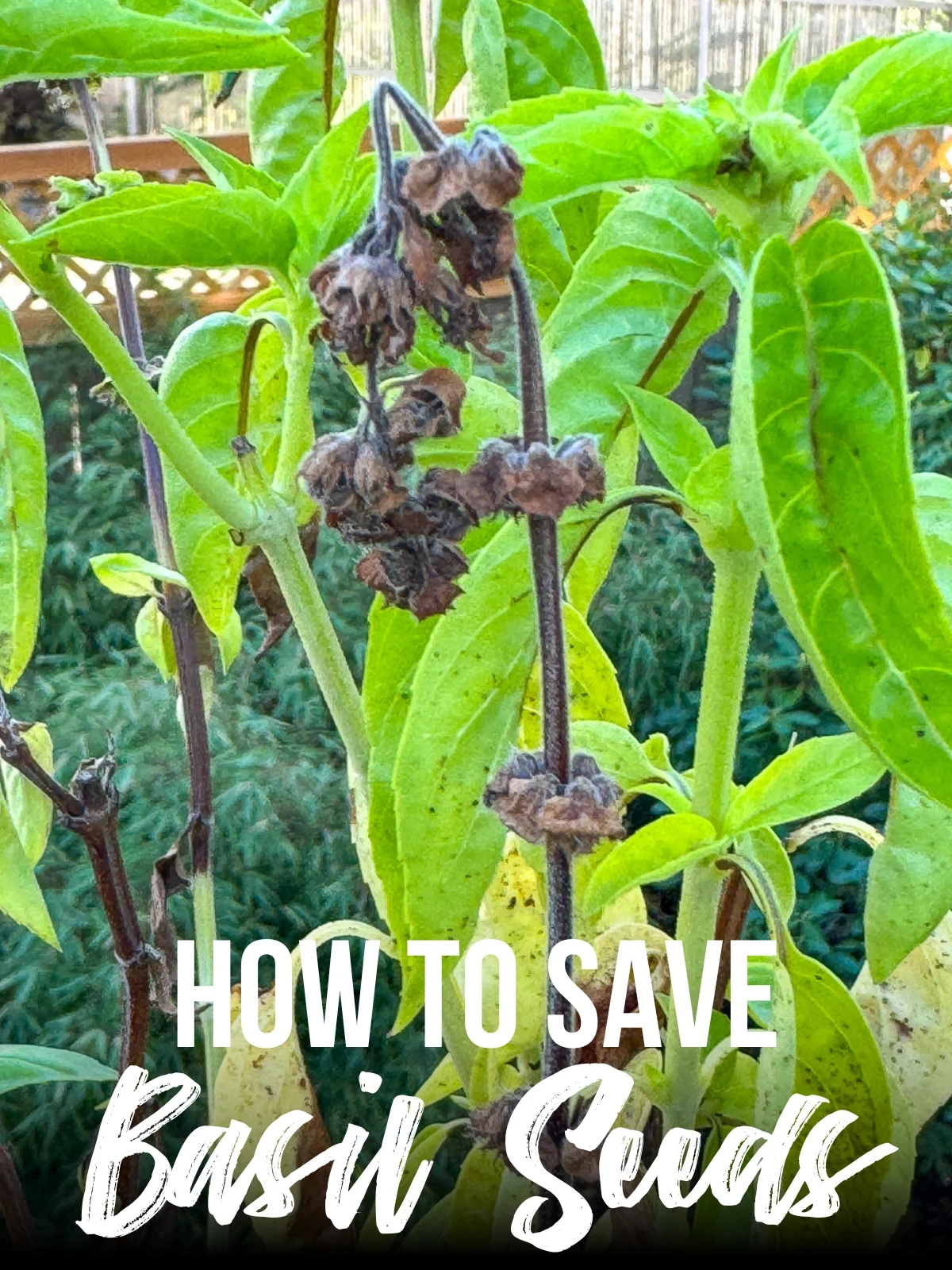
The best way to keep basil growing throughout the summer is to pluck off the flowers as they appear. But as the weather cools, consider letting a few stems go to seed so you can collect them for next year!
This article guides you through the process, from the perfect time to harvest basil seeds to the best practices for storing them. Harvesting your own basil seeds is not only cost-effective but also ensures the continuity of your favorite varieties.
Growing basil from seed is really easy, and harvesting basil seeds saves you even more money than buying plants at the store!
When to Harvest Basil Seeds
Knowing when to harvest basil seeds is crucial for successful seed saving. The key lies in observing your basil plants as they complete their growth cycle.
Timing: It can take weeks for the seeds to ripen after the plant flowers. I typically stop pinching off the flowers in early September, when my basil plants start looking kinda sad anyway. By October, these seeds were ready to be harvested!

Seed Pod Formation: After the basil blooms, watch for the formation of small, brownish-black seed pods at the base of each flower. This is your first sign that seeds are developing.
Color and Texture Changes: Mature basil seeds are found in pods that turn from green to brown. When these pods become dry and brittle to the touch, it's an indication that the seeds inside are ready for harvest.
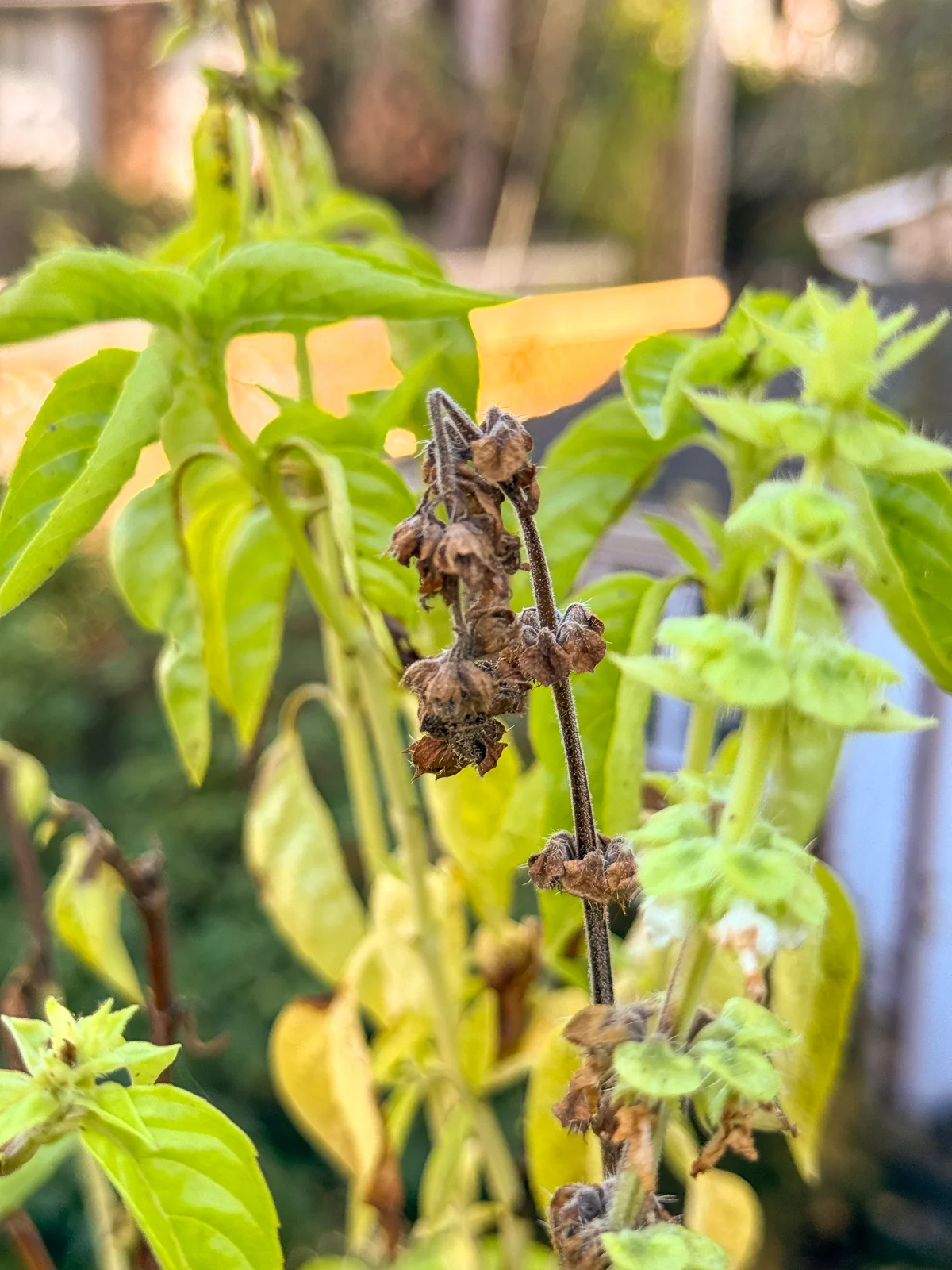
By paying close attention to these signs, you can pick the perfect moment to collect your basil seeds, ensuring their highest quality and viability for future planting.
How to Harvest Basil Seeds
Once you've identified that your basil seeds are ready to be harvested, the next step is to collect them carefully. Here’s how!
Cut off the seed heads
Aim for a dry, sunny day. Moisture can compromise the quality of the seeds. I waited until we had a string of warm, dry days so the seeds wouldn't be soggy.
Gently snip the seed heads from the plant using scissors or pruning shears. Be sure to leave a few inches of stem attached.
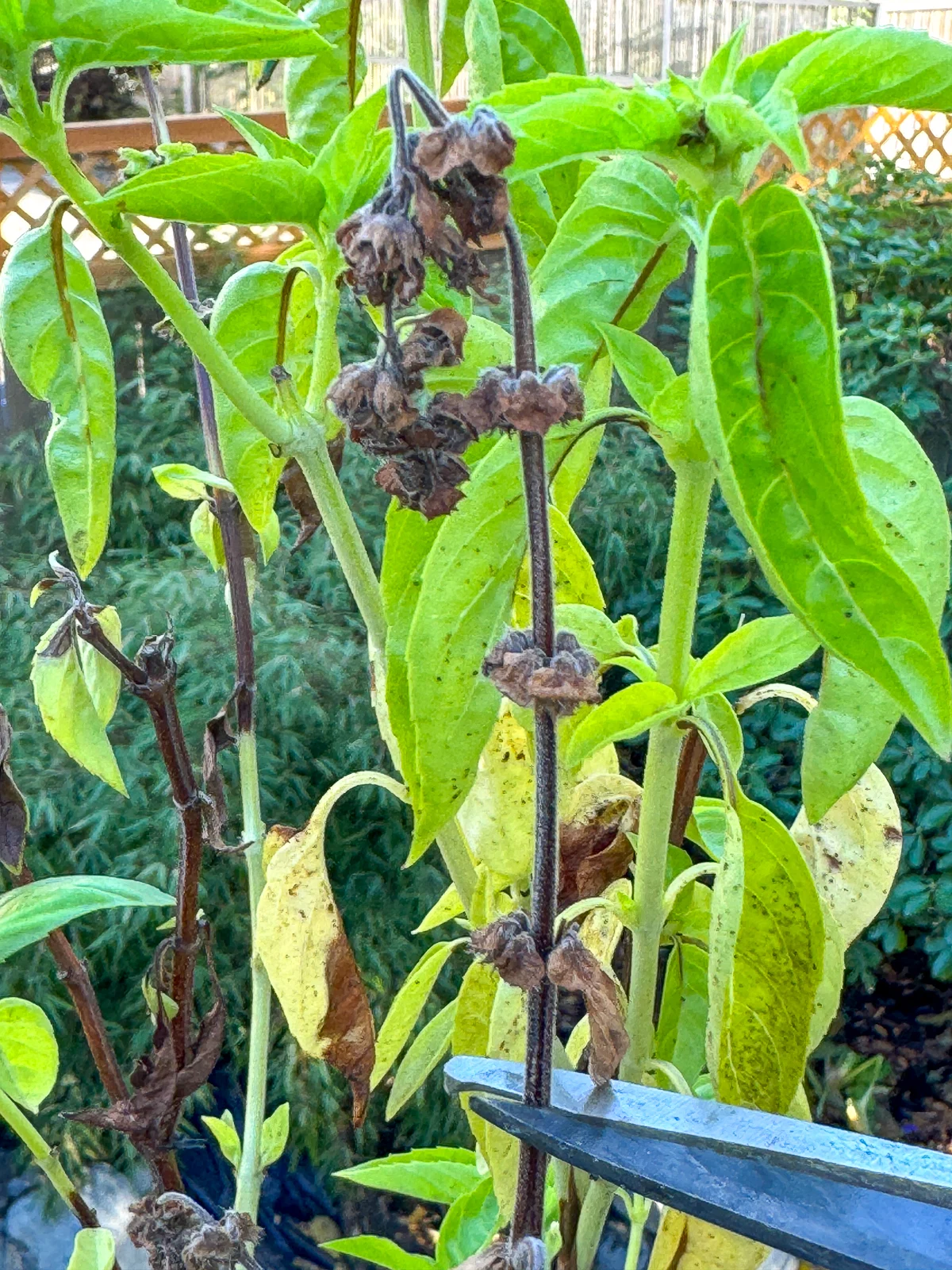
Dry the seed heads
Before extracting the seeds, it's important to dry the seed heads further. Lay them out on a clean, dry surface in a well-ventilated area, away from direct sunlight.
I just dropped all my stems into a paper bag and left the top open so any moisture could evaporate. This can take a few days to a week, depending on the humidity.
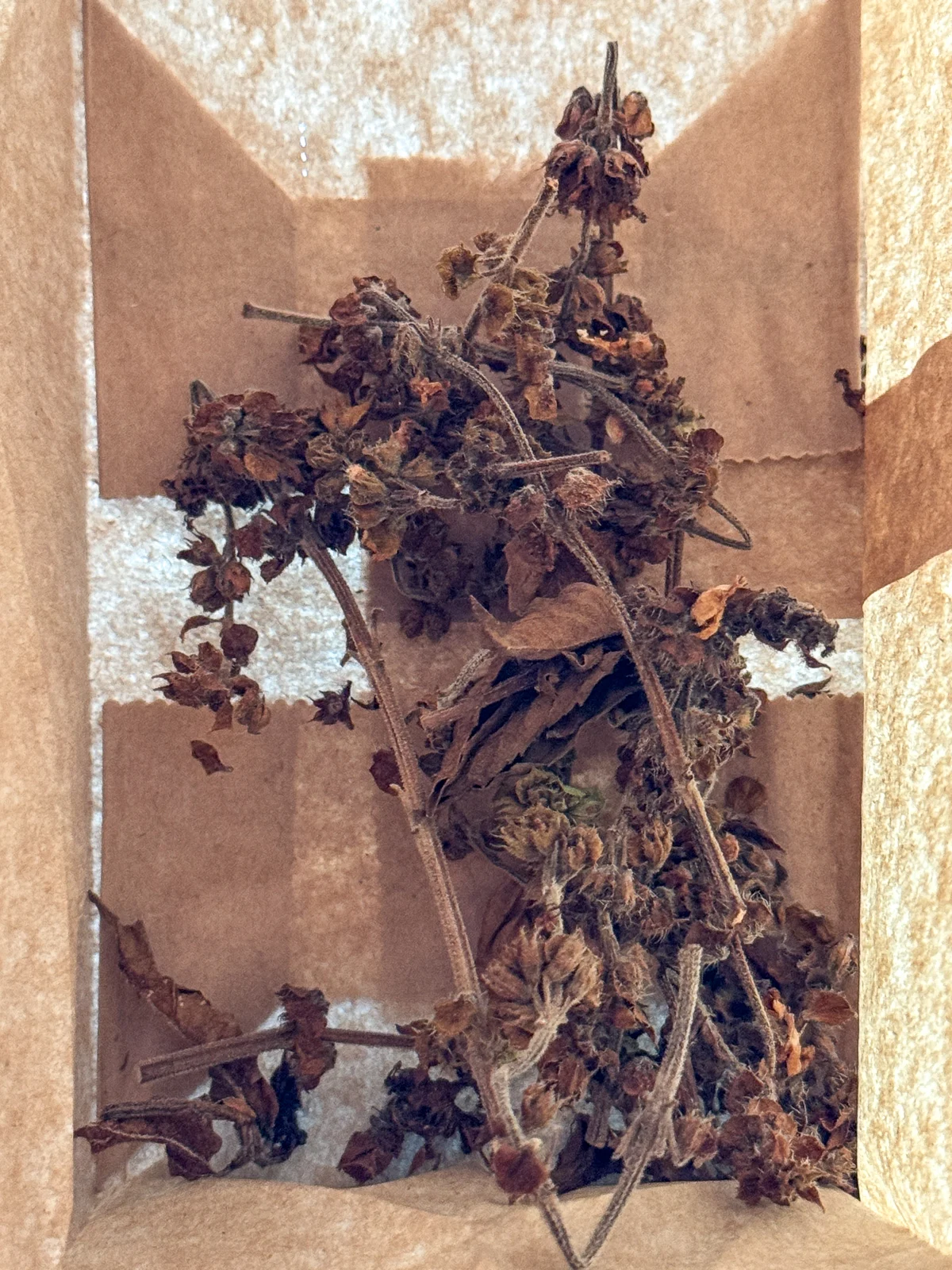
Extract the seeds
Once dried, place the seed pods on a piece of paper or in a bowl. Crush the pods with your finger or hand to release the seeds from the pods.

Another method for extracting basil seeds from their pods is to shake them around in a paper bag. Then dump them out onto a sheet of paper and pick out the seeds.
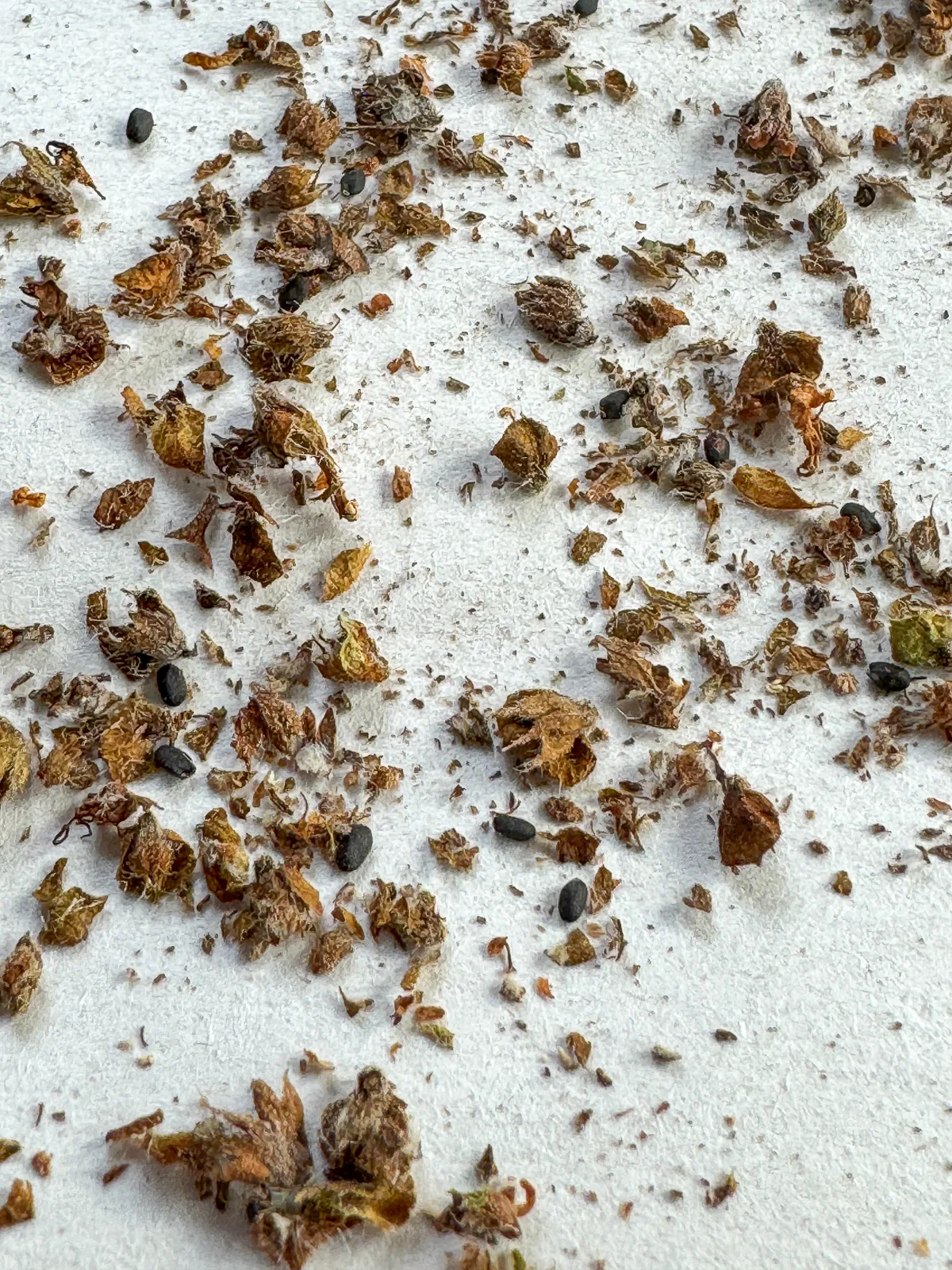
Separate the seeds from the chaff
After you remove the seeds, you'll be left with a lot of chaff. To separate this from the seeds, place everything in a shallow bowl and gently blow over the top, allowing the lighter chaff to be removed while the heavier seeds remain.
The video below shows how to winnow seeds easily using a bowl.
Storing Basil Seeds
After harvesting and cleaning your basil seeds, you'll want to store them safely away until spring.
- Choosing the Right Container: Use an airtight container such as a glass jar, or a paper envelope stored in a plastic bin. This helps prevent moisture and pests from reaching the seeds.
- Labeling: Clearly label your container with the seed type and the date of collection. This is particularly important if you're storing multiple varieties of seeds.
- Ideal Storage Conditions:
- Temperature: Store the seeds in a cool, dry place. A temperature around 50°F (10°C) is ideal. Many people use a refrigerator or a cool basement.
- Humidity: Low humidity is crucial. If you're concerned about moisture, adding a desiccant packet or some dry rice in the storage container can help absorb any excess moisture.
- Light: Keep the seeds in a dark place or in an opaque container to protect them from light, which can trigger germination or harm the seeds.
- Periodic Checks: Periodically check on your seeds for signs of mold or moisture. If you notice any, it may be necessary to dry them out again or move them to a drier storage location.
I like to store my seeds in paper envelopes and keep them in this metal storage bin. All my seeds are neatly organized and kept safe from moisture and light.
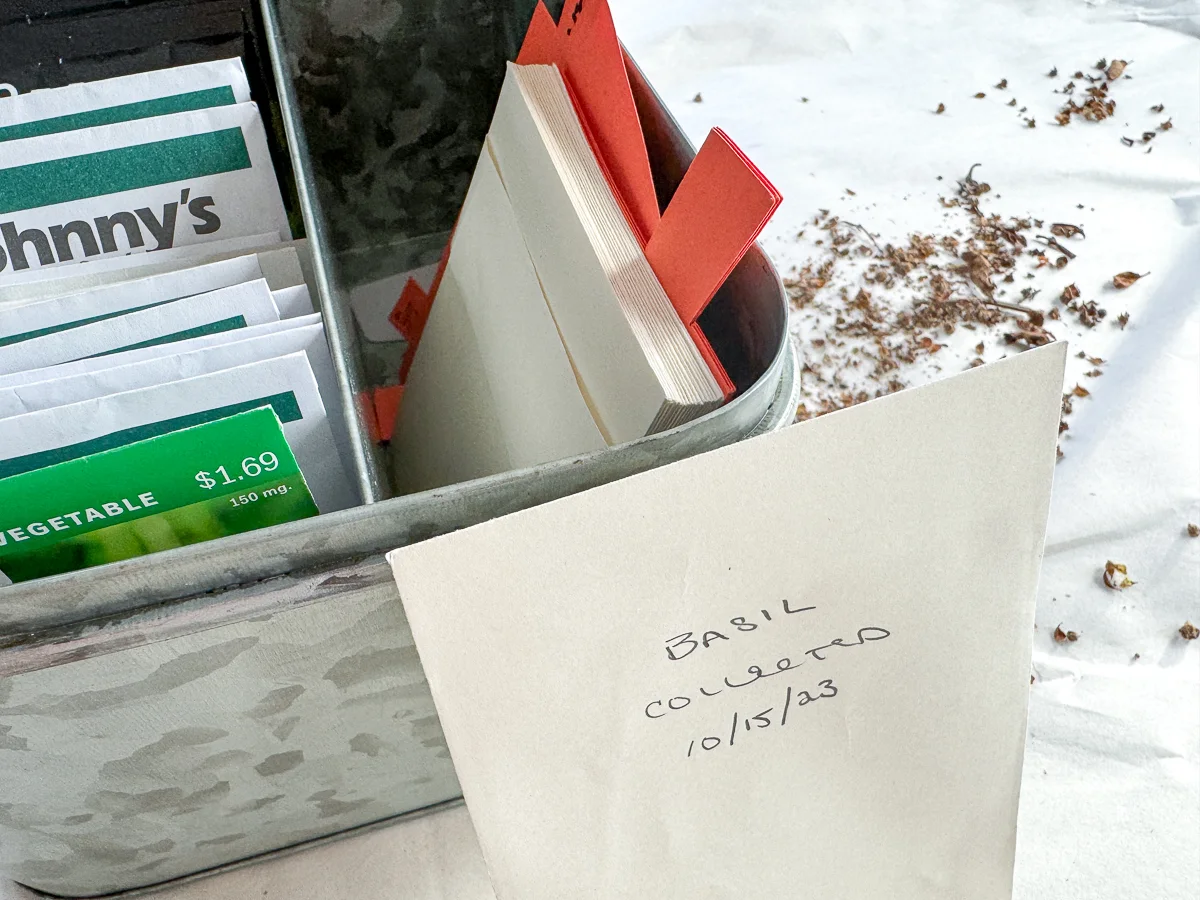
By following these storage guidelines, your basil seeds will be well-preserved and ready for planting when the next growing season arrives, ensuring a continued supply of this tasty herb.
Testing Seed Viability Before Planting
Before planting your saved basil seeds, it's a good idea to test their viability. This ensures a higher germination rate, so you don't waste space and time on seeds that won't sprout.
The easiest way to test for germination is the paper towel method. Just lay out a few seeds on a damp paper towel and fold it over the seeds. Place the bundle in a plastic bag or container to retain moisture and set it in a warm area.
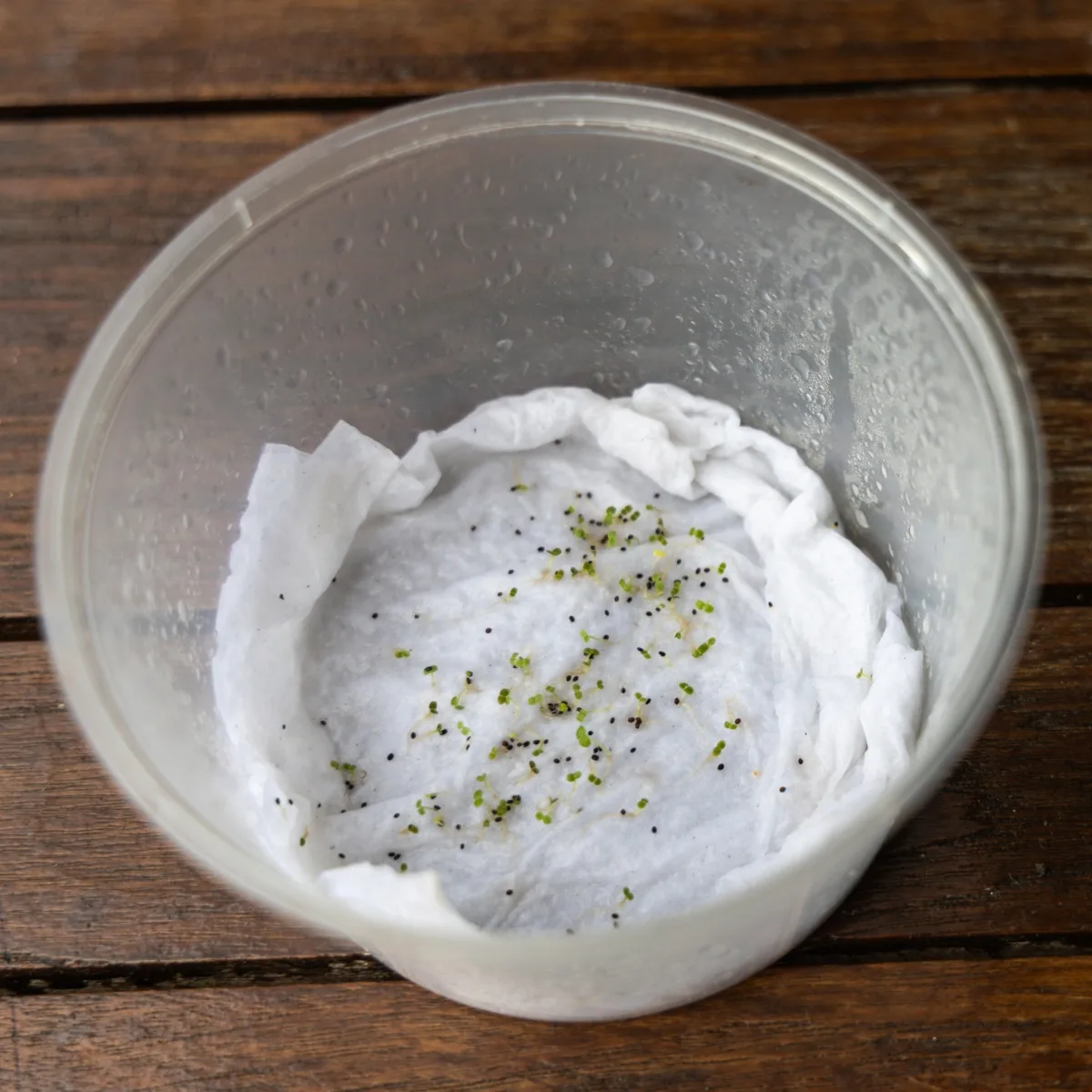
Basil typically germinates within 5-10 days. Check your seeds in this time frame to see if any of them have sprouted. Then you can pop the viable seeds into a tray or pot and dispose of the duds.
So, the next time your basil plants reach the end of their season, don't just rip them out of the ground! Save the seeds and grow them again next year!
Check out these other seed-saving and propagation tutorials!

